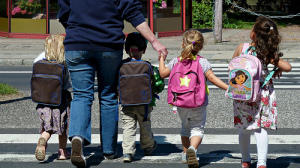
A total solar eclipse (the first since 1979) is slated to happen TODAY on August 21 and will be visible across all of North America. A partial solar eclipse will last between two and three hours, with the whole continent experiencing the phenomenon
The path of the total eclipse follows just a tiny sliver 67 miles wide as it runs from coast to coast. If you’re outside the zone, you will only see a partial eclipse. The “path of totality,” in which the moon’s shadow sweeps across the Earth’s surface, will cross parts of the following states: Oregon, Idaho, Wyoming, Nebraska, Kansas, Missouri, Illinois, Kentucky, Tennessee, Georgia, North Carolina and South Carolina. The total eclipse begins in Oregon at 10:16 a.m. PDT. It will end near Charleston, S.C., at 2:48 p.m. EDT.
In any given location, the total eclipse will last about 2 or 3 minutes. It will take about an hour and a half for the eclipse to move across the entire country. the only safe way to look directly at partially eclipsed or uneclipsed Sun are via special-purpose solar filters, including “eclipse glasses” or hand-held solar viewers. If you don’t already have glasses it is probably too late although some local libraries and town halls are giving out free glasses. Check your local town websites for information. Here are some important safety tips.
· The Sun or eclipse should not be viewed with an unfiltered camera, telescope, binocular or telescope, for fear of “serious injury” to your eyes
· Normal sunglasses do NOT provide protection
· If planning to take photos of the eclipse or view it through a telescope or binoculars, you’ll need a solar filter (note that a polarizing filter is not good enough). This will protect both your eyes and the lenses in your device.
· Be careful when driving during the eclipse, people may pull over or there may be delays ~ so allow extra time for your journey
· Make sure children who are not wearing the proper eclipse safety glasses either stay inside or do not look at the sun
Don’t worry if you miss it, it will be highlighted on the news and on social media as it occurs throughout the day!
 As you may be aware, the public school children will be off several days in September, October and November. These are regular workdays for an au pair, unless your host parents tell you otherwise. As with any “school holiday” start making plans for activities with the kids now.
As you may be aware, the public school children will be off several days in September, October and November. These are regular workdays for an au pair, unless your host parents tell you otherwise. As with any “school holiday” start making plans for activities with the kids now.





